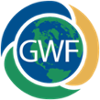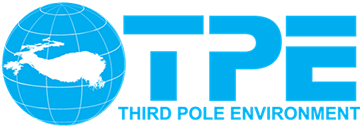World Climate Research Programme (WCRP) and the Global Energy and Water Exchanges (GEWEX) Project

WCRP Homepage
GEWEX Homepage
GEWEX Regional Hydroclimate Projects (RHPs)
GWF builds upon several decades of Canadian contributions to the GEWEX project, primarily through focused Regional Hydroclimate Projects (RHPs). GEWEX RHPs are large, regionally-focused multidisciplinary projects that aim to improve the understanding and prediction of that region’s weather, climate, and hydrology. The Canadian contribution began in the 1990s with the Mackenzie GEWEX Study (MAGS), focusing on the Mackenzie River Basin between 1994 and 2005. In 2012 the Saskatchewan River Basin (SaskRB) RHP was approved and was expanded in 2014 to include the Mackenzie Basin. This broader RHP for western Canada mirrored the Changing Cold Regions Network (CCRN), running from 2013 to 2018. This effort was further expanded in scientific and geographic scope with the GWF program, which since 2018 has contributed to GEWEX as a fully operational RHP—the only current RHP for North America.
The GWF North American RHP geographic domain includes five major regions (see map below):
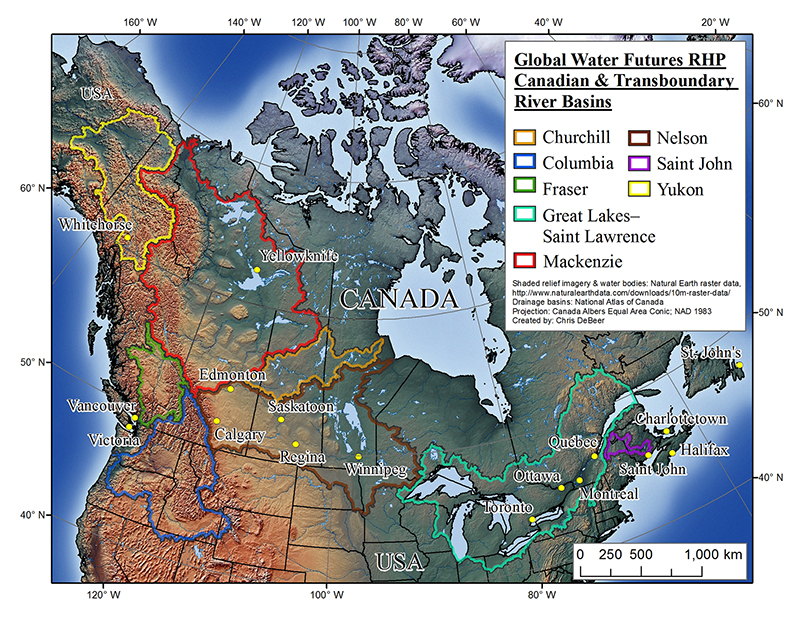
- the Great Lakes and St. Lawrence in eastern Canada and the Maritimes (including the Saint John Basin),
- the prairies in central and western Canada (western Nelson River Basin),
- the Boreal Forest across much of northern Canada (northern St. Lawrence, eastern Nelson, Churchill, and southeastern Mackenzie Basins),
- the western Cordillera from the U.S. Pacific northwest up to the Sub-Arctic Mountains of the Yukon and Alaska (Columbia, Fraser, and Yukon Basins, and the headwaters of the Nelson and Mackenzie Rivers), and
- the Sub-Arctic Taiga, Tundra, and southern Arctic in the North (northern Mackenzie Basin).
As a direct contribution to the GEWEX project, GWF will address the following research questions:
- How will extreme atmospheric events and other changes to the climate system be translated by the hydrological system into hydrological extremes?
- How will hydrological storage in lakes, managed reservoirs, glaciers, permafrost, groundwater and wetlands interact with a changing climate and shifting terrestrial ecosystems to create new hydrological regimes?
- How can humans better manage, mitigate and adapt to this change and conserve ecosystems through water and land management, prediction, and governance?
- Proposal to WCRP’s GEWEX Project for an Expanded RHP for Canada
- GWF update in GEWEX’s quarterly newsletter, August 2019
- Presentation from GWF Director, John Pomeroy, given to the 2020 GEWEX Hydroclimate Panel virtual meeting
- 2020 Annual report on the GWF RHP to the GEWEX Hydroclimate Panel
GWF sponsored, hosted, and co-organized the GEWEX 8th Open Science Conference, held in Canmore, AB in May 2018 . GWF organized sessions and presented several talks, as well as a plenary presentations on both the Changing Cold Regions Network and Global Water Futures and their science contributions to GEWEX. As part of the conference, a field trip was led by GWF Director, John Pomeroy, and GWF associate, Robert Sandford, to the Athabasca Glacier at the Columbia Icefield, Jasper National Park.
International Network for Alpine Research Catchment Hydrology (INARCH)

INARCH Website
GEWEX Hydroclimate Panel (GHP) cross-cutting projects
INARCH is a cross-cutting project of the GEWEX Hydroclimate Panel (GHP) that has the overall objectives to better understand alpine cold regions hydrological processes, improve their prediction, diagnose their sensitivities to global change, and find consistent measurement strategies. The network involves 50 international research scientists with wide-ranging expertise and includes 28 experimental hydrological research basins in 13 countries, covering most continents and major mountain regions of the world. INARCH is led by Distinguished Professor John Pomeroy, Director of GWF.
By combining this expertise, INARCH addresses important issues such as snow, glacier and permafrost hydrology; representation of snow and ice in hydrological land surface models; model downscaling in complex terrain; and improving the prediction of climate change impacts in the mountain headwaters that support water resources for half the world’s population. INARCH promotes the concept of open data, and a major effort has been undertaken to compile high-quality, long-term observational and experimental data from mountain research basins in a special issue of the journal Earth System Science Data (ESSD) called "Hydrometeorological data from mountain and alpine research catchments".
INARCH represents an important mechanism of international engagement and science contributions from GWF. Projects such as Mountain Water Futures, SPADE, the Integrated Modelling Program for Canada, and GWF’s Core Modelling team tie in strongly, and this connection helps broaden the impact of this work beyond Canada. INARCH and GWF are recognized contributions to the world water security initiative of UNESCO’s International Hydrological Programme.
For further information, see:
- Past INARCH articles in GEWEX’s quarterly newsletter:
- Presentation from INARCH Chair, John Pomeroy, given to the 2020 GHP virtual meeting
- 2020 Annual report on INARCH to the GHP
World Meteorological Organization (WMO)

WMO website
GWF has formal linkages to WMO through the Study Group on WMO Cryosphere Crosscutting Functions: Global Cryosphere Watch (SG-CRYO), and co-organized and co-chaired a High Mountain Summit at WMO headquarters in Geneva, Switzerland in October 2019. The aim was to foster international and regional inter-agency collaboration, across sectors, scales, and actors, by leveraging existing and planned initiatives and projects, for providing integrated climate service delivery functions, along the value chain, addressing the need for reliable information on water and hazard management, precipitated by accelerated changes in high mountain cryosphere and ecosystems, with the objective to inform, and therefore, promote Sustainable Mountain Development. See the news release here.

Avoiding the Impending Crisis in High Mountain Weather, Climate, Snow, Ice and Water: Pathways to a Sustainable Global Future
A Call for Action from the High Mountain Summit 2019:
- The high mountain regions are the home of the cryosphere, and source of global freshwater that are transmitted by rivers to much of the world. Preservation of ecosystem function and services from these regions is essential to global water, food and energy security. Climate change and development are creating an unprecedented crisis in our high mountain earth system that threatens the sustainability of the planet. There is great urgency to take global action now to build capacity, invest in infrastructure and make mountain and downstream communities safer and more sustainable. This action must be informed by science, local knowledge and based on transdisciplinary approaches to integrated observations and predictions.
- We, the participants at the WMO High Mountain Summit 2019, hereby commit to the goal that people who live in mountains and downstream should have open access to hydrological, cryospheric, meteorological, and climate information services to help them adapt to and manage the threats imposed by escalating climate change. To meet this goal we commit to an Integrated High Mountain Observation and Prediction Initiative, organized as collective, intensive campaigns of analysis and forecasting demonstration projects in key high mountains and headwaters around the world. The Initiative will co-design solutions, build capacity and suggest investments with information users, providers and producers to address the front lines of climate, cryospheric, and hydrological change in support of natural hazard risk management and adaptation in mountain regions and downstream. We urge the relevant organisations to collaborate and specifically organize as a matter of urgency, intense observation and prediction campaigns in a WMO Year of Mountain Prediction. The Initiative will contribute to the desired International Year of Mountains, and Year of Snow and Ice and will be co-produced and supported by a consortium of national institutions, international initiatives, user groups, researchers and science networks from policy, operations, practice and scientific research under the convening leadership of WMO.
United Nations Educational, Scientific, and Cultural Organization (UNESCO) Intergovernmental Hydrological Programme (IHP)
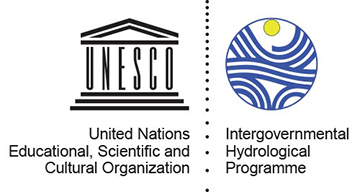
UNESCO IHP
The IHP is UNESCO’s international scientific cooperative program in water research, water resource management, water education, and capacity- building, and the only broadly based science program of the UN system in this area. The IHP stimulates and encourages hydrological research and assists Member States in research and training activities. Its eighth phase focuses on six thematic areas: water-related disasters and hydrological changes; groundwater in a changing environment; addressing water scarcity and quality; water and human settlements of the future; ecohydrology, engineering harmony for a sustainable world; and water education, key to water security. GWF contributes to the IHP in several ways:
- The Canadian National Committee for IHP (CNC-IHP) includes representation from GWF’s leadership and reports on activities/initiatives undertaken by the Canadian hydrological community that contribute to the framework of the IHP. This can inform the Themes and Focal Areas of IHP-Phase VIII.
- GWF has helped design IHP’s water security and climate change strategy and there have been discussions on how GWF could contribute to IHP priority areas in the Americas and high mountain regions in Asia.
- GWF supports the IHP through the activities of many GWF projects, and particularly with the development of GWF’s Planetary Water Prediction Initiative (PWPI). IHP is focused on strengthening resilience and developing integrated methods for sustainable development and adaptation to climate change in developing countries in several important mountain and downstream regions worldwide. Key regions as starting points for the GWF PWPI include the Andes, the Hindu-Kush–Himalaya, and Central Asia as a first priority, and northward flowing rivers into the circumpolar Arctic Ocean as a second priority. A memorandum of understanding is currently being drafted between GWF and UNESCO IHP to solidify the framework and details of collaboration.
United Nations International Water Action Decade: Water for Sustainable Development, 2018–2028
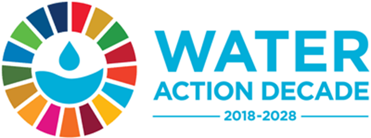
Water Action Decade
Canada Water Decade
The United Nations has long been addressing the global crisis caused by unsafe water and sanitation and growing demands on the world’s water resources to meet human, economic and environmental needs. In December 2017 UN Member States adopted United Nations General Assembly resolution 71/222 on an International Decade for Action on ‘Water for Sustainable Development’ 2018-2028. In response to the ambitious 2030 Agenda, the Water Action Decade will accelerate efforts towards meeting water-related challenges, including limited access to safe water and sanitation, increasing pressure on water resources and ecosystems, and an exacerbated risk of droughts and floods.
Together with the United Nations University - Institute for Water, Environment and Health, GWF is leading a Canadian contribution to the Decade that will address the targets of Sustainable Development Goal 6 (SDG 6: Ensure the availability and sustainable management of water and sanitation for all) of the 2030 Agenda for Sustainable Development.
- Water Futures for the World We Want: Opportunities for research, practice, and leadership in achieving SDG 6
- Canada in the Global Water World: Analysis of Capabilities
- The Water Action Decade was a focal topic at GWF’s Operations Team meeting in Hamilton ON, in November 2019
- This included presentations and discussions on Canada’s contributions, the launch of the Water Futures for the World we Want report, and media engagement/publicity on the collaborative activities (see the news article here).
Institute of Tibetan Plateau Research, Chinese Academy of Sciences (ITP/CAS) and the Third Pole Environment (TPE) Program
The TPE Program focuses on the unique high-mountain region centered on the Tibetan Plateau in Asia. This region stretches west to the Pamir-Hindu Kush region, east to the Hengduan Mountains, north to the Kunlun and Qilian mountains, and south to the Himalayas, encompassing over 5 million km2 with an average elevation of over 4,000 meters above sea level. TPE was initiated in 2009 and is an international program for the interdisciplinary study of the relationships among water, ice, air, ecology and humankind in the Tibetan Plateau region and beyond. TPE is currently being considered as a prospective Regional Hydroclimate Project (RHP) for the Global Energy and Water Exchanges (GEWEX) Project.
In December, 2018, a memorandum of understanding was signed between GWF and ITP/CAS and the TPE Program. This sets out the groundwork for collaborative activities, including workshops, student and post-doctoral fellow exchanges, joint field experiments and other research projects, and other areas of interaction between the two programs. ITP/CAS and the TPE Program are also tied in with INARCH, with several participants involved and a number of research basins in China contributing to the INARCH efforts.
Future Earth Sustainable Water Futures Programme (SWFP)

SWFP Website
The Sustainable Water Future Programme (SWFP) of Future Earth is a global platform facilitating international scientific collaboration to drive solutions to the world’s water problems. Consistent with the broad objectives of the Sustainable Development Goal for Water, research conducted through SWFP seeks to ensure a balance between the needs of humankind and nature, and to offer real solutions, underpinned by interdisciplinary science, to deliver a sustainable ‘water world’. SWFP champions the application of integrated research to generate solutions that can be used to support policies for sustainable development. The programme serves as an ideas incubator, network hub and translator of scientific findings to address science, engineering, governance and management issues and drive policy change. The programme brings a unique, systems-level perspective to develop integrated approaches for both diagnosing water-related challenges and crafting innovative solutions.
GWF is the Canadian node partner of SWFP and has representation on the SWFP International Secretariat and Scientific Steering Committee. In 2016, the Global Institute for Water Security (GIWS) at the University of Saskatchewan, Saskatoon, Canada, and the International Secretariat for SWFP at Griffiths University, Brisbane, Australia signed a memorandum of understanding to establish a collaborative partnership. This set the context for coordinated and strategic research activities that will underpin the sustainable management and use of water in this time of significant global environmental change. GWF contributions include leadership of important Canadian and international research initiatives focussing on water resources and climate change in cold regions, and with linkage to INARCH, a working group on Climate Impacts on Global Mountain Water Security has been formed.
GWF co-sponsored the Future Earth WaterFuture Conference “Towards a Sustainable Water Future” in Bengaluru, India in September 2019. GWF and INARCH researchers convened a session on “Climate Impacts on Global Mountain Water Security”, and provided many presentations on knowledge mobilization and sustainable development goals and water, and a plenary talk on “Losing our Cool: Water Predictions for the Warming Cold Regions”. GWF is working with scientists from the Indian Institute of Science (IISc) on modelling Indian river basins to help address the acute water crisis that is evolving in the Indian sub-continent. An outcome of this meeting was the signing of a memorandum of understanding between GIWS and the IISc, Bengaluru to formalize the partnership, document objectives, and agree on priority areas for collaboration. Another major development at this meeting in India were discussions with the Integrated Mountain Initiative, which is a group of high-level parliamentarians and representatives from 11 Indian Himalayan states and two Union Territories that are wanting to improve their water security through science and collaboration. They plan to develop a “Himalayan Water Futures” in cooperation with Bhutan and Nepal and are modelling it using GWF’s experience and advice.
GW4 Water Security Alliance (WSA)
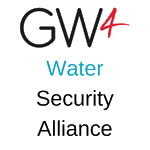
Official Website
The GW4 Water Security Alliance (WSA) is a collaboration between University of Bath, University of Bristol, Cardiff University and University of Exeter in the United Kingdom. With 200+ academics across four leading UK research institutions, the WSA is the largest UK water research consortium – and one of the largest worldwide. It brings together academics and stakeholders with a common vision of addressing the impact of global change on water to benefit people and ecosystems. The Alliance is a platform for:
- Increasing cross-institutional working;
- Sharing state-of-the-art infrastructure, facilities, equipment and training resources;
- Forging long-term collaborative relationships across multiple sectors and industries;
- Fostering multidisciplinary water research excellence to increase international recognition and impact.
GWF has recently solidified links with the WSA and participated virtually in the GW4 WSA 2020 Annual Conference. A memorandum of understanding was signed between the two organizations in June 2020 to formalize their partnership, to document the shared objectives, and agree on priority areas for collaboration and cooperation and the timing of their delivery. It is expected that both Parties, with their strong national and global network of scientists and policy makers, businesses and practitioners through active stakeholder participation, research and training facilities will provide each other with opportunities to initiate and realize their research agenda particularly in the areas of Water Security. Added value stems from the sharing of complementarity of expertise, the opportunity for a more global approach, and working in synergy to address water challenges. It also lies in the opportunity for knowledge exchange across our respective stakeholders to ensure a better water future for the UK, Canada and beyond.
GWF Planetary Water Prediction Initiative
This internationalizes GWF’s modelling capabilities by contributing sophisticated hydrological modelling products and geospatial intelligence approaches to expand the direct impact of GWF beyond Canada. This initiative focusses on better predicting vulnerable cold region water sources globally in the high altitudes and high latitudes and in their downstream river basins that support over half of humanity. Canada has shown global leadership through its GWF modelling efforts and can make a major contribution to predicting the changes occurring in global hydrological and energy cycles. By advancing the computational infrastructure (datasets, modeling capabilities) necessary to produce global-domain simulations and predictions of hydrological risks, this initiative uses state-of-the-art modeling capabilities to develop new and strategic collaborations with organizations and countries through mutually beneficial, internationally focused projects. The program involves collaboration with countries in the Americas, Asia, and Europe to develop, support, test, and apply coupled climate–hydrology and eventually water quality–water management models globally with an emphasis on river basins where high mountain water supplies feed local and downstream water demands and ecosystem needs. This will put greater capacity behind GWF’s commitments to the WCRP through GEWEX, Future Earth through the SWFP initiative, UNESCO through the IHP, and the WMO through its High Mountain Initiative and Polar Prediction Program.
